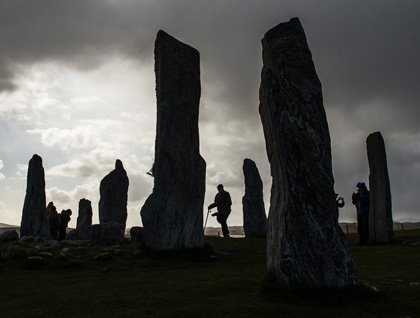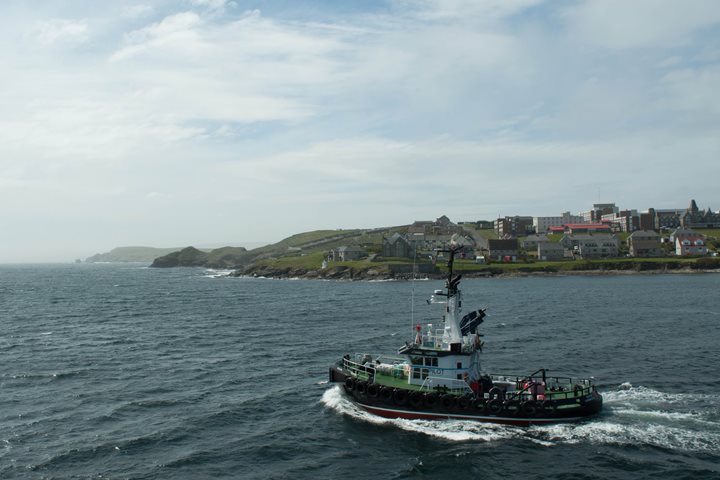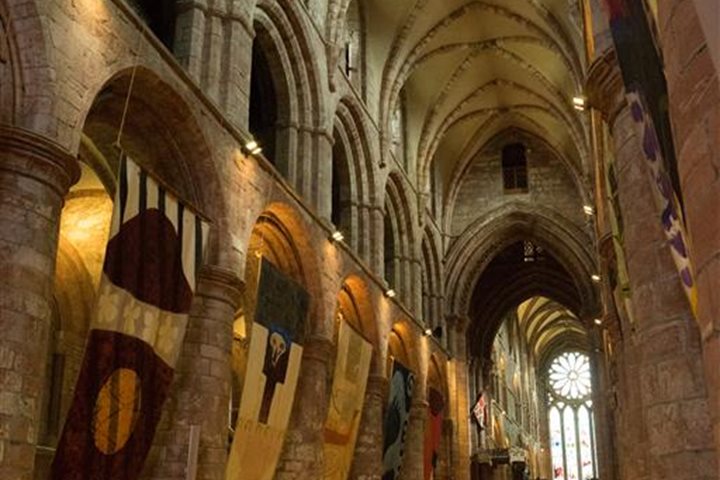From fresh green flower buds, only a few days old, to 5,000 years of Scottish history written in stone, our day was a perfect blend of fresh and ancient. Cruising towards the eastern reaches of the Isle of Lewis on a blustery breeze our morning was bound for the Standing Stones of Callanish. While reminiscent of the more heavily visited Stonehenge of England the Callanish stones were forged beneath the Isle of Lewis where geology conspired to give these 8-16 foot tall megaliths a look and feel worthy of their own name—Lewisian Gneiss. A billion years of melting and re-melting beneath the earth’s surface created this heavily metamorphosed rock type, which was specifically chosen by the industrious residents of Lewis for its beauty and use in lunar observation. Oriented in the shape of a cross, despite its pre-Christian origins, this site was probably used by prehistoric peoples for rituals and ceremony (in addition to sky watching) but no two sources can agree on the exact reason the early inhabitants of this island would have moved such large stones into such an array. May the mystery last another 5,000 years!
From Callanish we continued west to another reminder of early human ingenuity. Brochs are tower-shaped structures once used as status symbols by local lords. Today the geometric remains of Dun Carloway Broch stands sentinel over a blanket peat bog peppered with deep blue lakes and glaciated mountains to the south.
Crossing from the Isle of Lewis eastwards, towards the Scottish mainland, we spent the afternoon at a well established estate named Inverewe Gardens. Encompassing 12,000 acres of native and exotic plants this stop was a chance to take in the dream of Osgood Mackenzie and his ability to harness the warmth of the Gulf Stream to promote botanical experimentation. At 57.8 degrees north latitude this estate runs parallel with Canada’s Hudson Bay yet harbors species that would be just as happy in South Africa, Australia, or Argentina. Beneath lush green canopies, blue skies and a swirl of wind we strolled the grounds throughout the afternoon before returning to National Geographic Explorer and setting a northerly course for the Orkney Islands.
Exposed to human resourcefulness spanning thousands of years it is no wonder the people of northern Scotland are the hardy, industrious folk they are. It is written in their history and demeanor and was a wonderful legacy to behold today.







